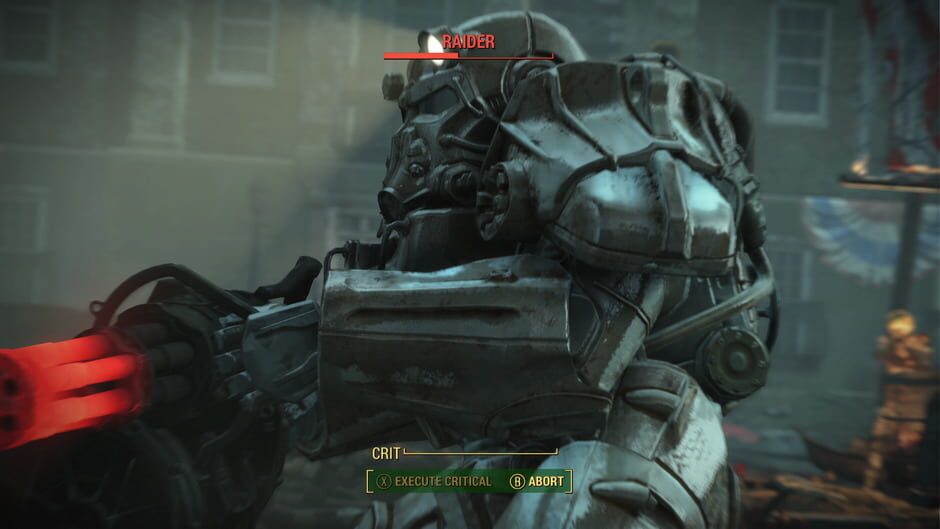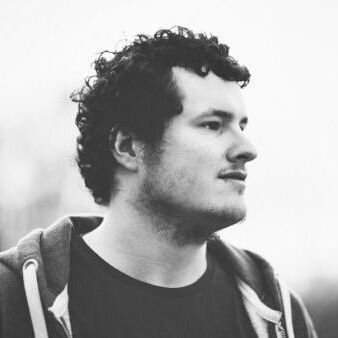Fallout's Brotherhood of Steel are not who you think they are
Beware those who don the trappings of the righteous

The year is 2161, and American civilization is a half-remembered story, buried beneath bombs. The great hopes for society in the Californian south are, variously: a one-horse casino town; a jumped-up pit stop for caravans; a tribe of raiders named the Khans; a robed cult centered around a spooky cathedral; and the new master race of the supermutants. Any decent person is toiling away on their desert farm, grasping for subsistence.
Who, then, are these self-described paladins, hiding in a bunker behind a chainlink fence? The two schmucks guarding the door certainly look like knights, tinned in shiny armor. The emblem painted behind their heads resembles a winged sword, and they speak of a quest – to venture into the “ruins of the Ancient Order”. But something is off.
“Uh, you’ve gotta go inside,” says the guard on the left, haltingly. “And bring back something that proves you were there.”
“I can’t believe it,” scoffs the guard on the right. “They’re sending him down there?”
The ‘Ancient Order’, it turns out, is better known to locals as The Glow – a military testing facility so thoroughly nuked during the war that it now resembles a gaping maw, a rip in the landscape. This rotten mouth breathes radiation of such profound proportions that climbing inside is a death sentence to any but the rigorously prepared. Which is what the Brotherhood elders are counting on. The Glow is a place to send would-be initiates so they never darken the faction’s door ever again.
The lesson is an important one: 2161 is not a time of black-and-white heroism, and any who paint in such colors are dangerous.
Brother, where art thou?

This, it’s fair to say, is not the Brotherhood of Steel many got to know in Fallout 3. When Bethesda took over the reins to the series, it reimagined the group as a protective arm around the Capital Wasteland. Under the direction of Elder Lyons, the DC chapter of the Brotherhood waged a long war against the supermutants on behalf of those less able – and even lent support to Liam Neeson’s water purification project, for the benefit of all. This dogged selflessness came at great cost to the sect – but with the help of the player character and an anti-commie iron giant named Liberty Prime, the Brotherhood was able to deliver both freedom and bottled water to the region.
Sign up for breaking news, reviews, opinion, top tech deals, and more.
The Brotherhood of Steel, as Black Isle first envisioned them, were a quasi-religious hangover from the US military
All of which would sound like altogether too much work to the original Brotherhood, as first encountered in California several decades prior. Their ideology can be gleaned from that Arthurian emblem, in which the wings represent the hope for the future inherent in advanced technology, and the sword demonstrates the order’s willingness to defend itself from all comers.
Defending others? Not really part of the deal. The Brotherhood of Steel, as Black Isle first envisioned them, were hoarders – a quasi-religious hangover from the US military, determined to hoover up all the best weaponry in the state and sit on it. Gain entry to their bunker, dubbed Lost Hills, and you’ll discover the order has dressed the walls of its nest with as many shiny things as it can find. It trains initiates in the art of combat, decks them head to toe in power armor, and sends them out on expeditions to find ever-more-powerful tech. With the end goal of… well, that’s not clear. How exactly a big pile of miniguns and super-sledgehammers aids humanity’s salvation is a grand theistic mystery.

Outside of Lost Hills, injustice flourishes. Rival groups of raiders treat the village of Shady Sands like an all-you-can-eat buffet, stealing provisions and people whenever the whim takes them. Gizmo, the casino owner in Junktown, gears up to murder the local sheriff – the only person standing in the way of his corrupt capitalist hellscape. And in Adytum, amid the bones of Los Angeles, a brutal and manipulative police force grows fat on food produced by slaves. Everywhere, safety is made impossible by deathclaws, radscorpions, and a pervading sense that law and order belonged to another age.
At this point in the Fallout timeline, only the Brotherhood has the capability to protect people against the threats of the wasteland – and yet they choose to remain locked up and ignorant. Spend any time within the insular community of Lost Hills and you’ll realize they know far less about the world outside than even you, a Vault Dweller with mere weeks of travel under your belt.
The Deathclaw? “Just another stupid rumor,” the Brotherhood’s leader, the wizened Elder Maxson, says. “Some people say it’s a huge fanged monster and others say it’s a vampire.” Tell that to the Far Go Traders of The Hub, their business and ranks shredded by the beast the Brotherhood doesn’t believe exists.
Lost cause

As you arrive, the knights of Lost Hills are preparing for war. They’ve finally caught wind of the supermutant army distending to the north-west, and have recognized it as an existential threat to their order. But even that limited mobilization proves controversial within the ranks – at the table of elders, there are whispers that old Maxson has lost it.
“Well, you see, there’s four of them,” says Maxson of his elder council. “And that’s about all they can ever agree on. They can’t even agree they want to piss, much less pick a pot to piss in.”
Turns out building an immense stockpile of powerful technology with no set aim is a deeply irresponsible thing to do
If you’re persistent and persuasive, you’ll ultimately squeeze a small squad of paladins out of the Brotherhood to get you in the door of the mutie-factory that’s dooming the wasteland. But many players defeat the mutants and complete Fallout without ever seeing the knights lift a power-armored finger to help.
After the credits roll, it potentially gets much worse. In the best-case scenario, your actions lead the Brotherhood to become an R&D house on behalf of the budding New California Republic. In the worst case, with the old leaders out of the way, they become an overzealous, techno-religious dictatorship: “In 20 years, the Steel Plague devastates the newly formed New California Republic, and starts a Dark Age that could last a thousand years.” Turns out building an immense stockpile with no set aim is a deeply irresponsible thing to do.
Capital punishment

What explains the huge discrepancy between the Brotherhood of yore and the paladins stomping around the Capital Wasteland? A schism. Bethesda deserves credit for meticulously explaining the philosophical change that occurs under Lyons, far from the stern gaze of Brotherhood leadership in California, as well as its consequences. By the time of Fallout 3, the east coast chapter has been disavowed – cut off from Lost Hills after helping out one wastelander too many. You might even stumble across a group of Brotherhood Outcasts holed up in a fort in Fairfax, still bitching and moaning about the Elder’s divergence from the creed. “You just wait for when we get back in contact with the real Brotherhood out west,” one growls. “Lyons will have hell to pay.”
As it turns out, they don’t have long to wait. Lyons isn’t just an Elder, but elderly too, and passes away shortly after the game's events. By the time Fallout 4 rolls around, the east coast chapter is back under the command of a Maxson, who finds a middle ground between the hoarding and helping aspects of the Brotherhood’s identity – re-establishing contact with mother base and welcoming back the Outcasts in the process.
It’s this Brotherhood that now lives in the public imagination – a flawed but active world police force, halfway to the sainthood their emblem and armor imply. But I’ll always remember the selfish shitheads holed up in Lost Hills, who left me to fight off the megalomaniacal Master with the assistance of only a mangy dog and a local lad named Ian, who couldn’t fire his uzi straight. Fat lot of help they were.

Jeremy is TRG's features editor. He has a decade’s experience across publications like GamesRadar, PC Gamer and Edge, and has been nominated for two games media awards. Jeremy was once told off by the director of Dishonored 2 for not having played Dishonored 2, an error he has since corrected.